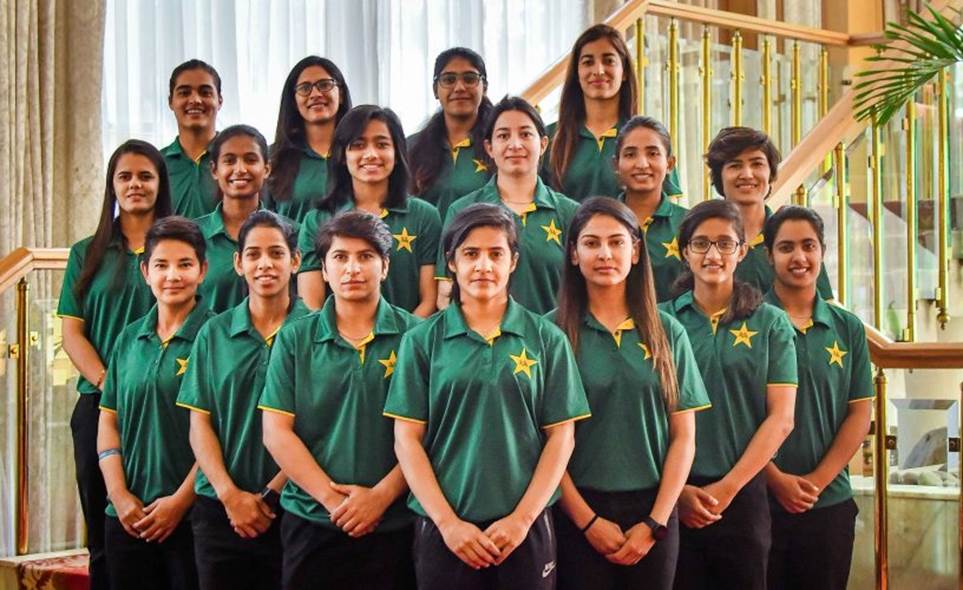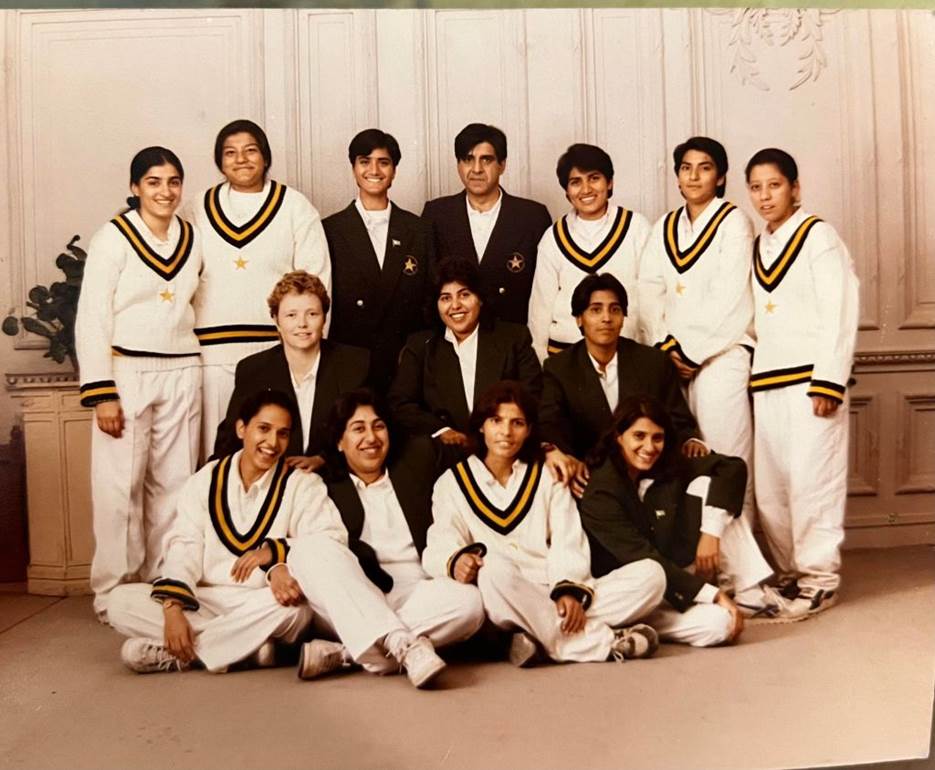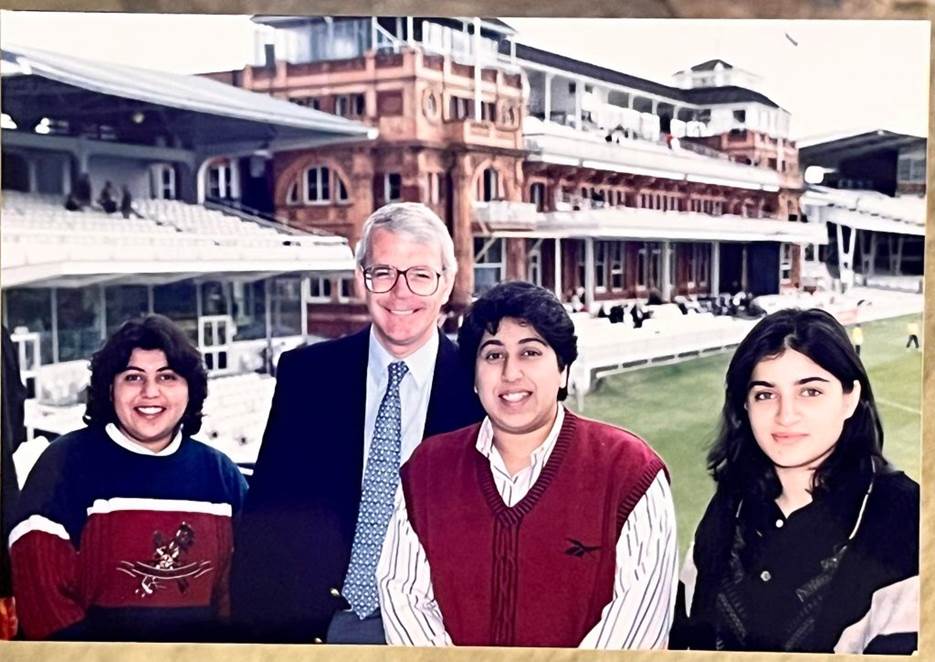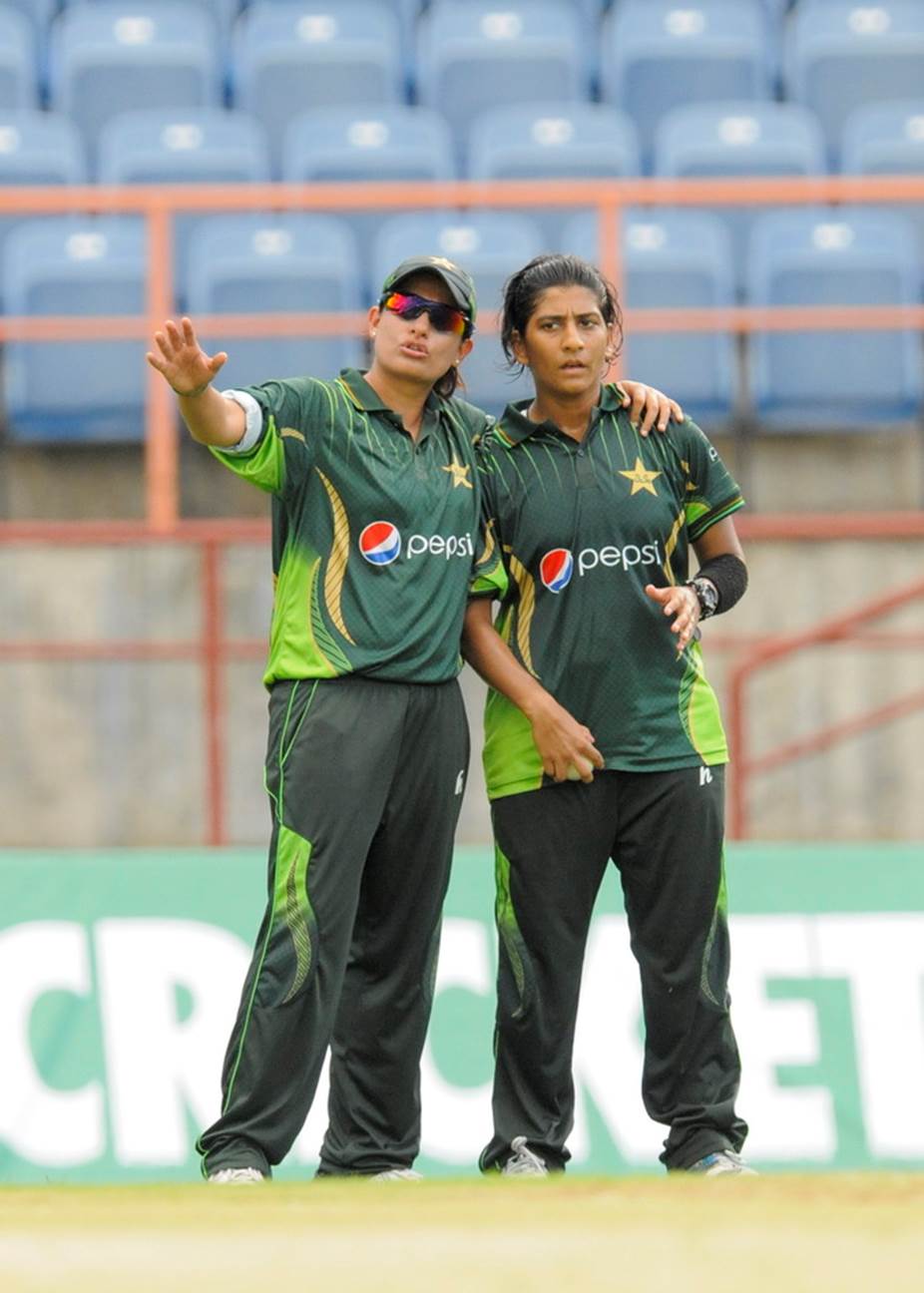
Indian sports journalist Aayush Puthran’s book Unveiling Jazbaa spotlights the daunting challenges faced by women cricketers in Pakistan, making their victories on the world stage all the more remarkable
Passion to Play: The Outstanding Story of Women Cricketers in Pakistan
By Noor e Emaan
In the summer of 2017, my sister and I joined the Kinnaird Cricket Club at the main grounds of Kinnaird College for Women in Lahore, Pakistan. I remember the cool shade of the trees in contrast with the sudden harsh heat of the open ground as we walked across.
As children, plus given the lack of media coverage of women’s sports, we didn’t know we were practicing alongside international cricket stars like Sidra Amin and Aliya Riaz. But we were inspired to see a group of women efficiently ace a male-dominated sport.
Reading the book, Unveiling Jazbaa: A History of Pakistan Women’s Cricket brought back these childhood memories. Written by Indian journalist Aayush Puthran, it was shortlisted for the 2023 Sports Book Awards under the category of Cricket Book of the Year.
First published in the UK by Polaris Publishing in July 2022, the book’s Indian edition was brought out by Westland Sport in October last year. Ironically, it is still not available in Pakistan. It took months for me to get hold of a copy, finally obtained through Aisha Jalil who manages women’s cricket at Pakistan Cricket Board (PCB).

Sports journalist and author Aayush Puthran

That the writer is Indian and male makes this book all the more remarkable. Puthran has captured not just the state of the sport in Pakistan but also the social, political, religious, and administrative challenges women cricketers here face at every step. The book is “about so much more than cricket,” as acclaimed sports journalist Tim Wigmore of The Telegraph put it.
Within the first few chapters, I was reminded of my days at the Kinnaird Cricket Club, of boys making fun of the girls on the ground, of my female classmates begging their parents to let them play. All cricket news on television and all discussions about cricket in Pakistani homes, offices, schools, sports clubs and marketplaces had one underlying premise: that it is a sport for men, not women.
Unveiling Jazbaa is an intriguing and forthright ‘unveiling’ of the anger and passion, or jazbaa, that runs in every female cricketer’s veins, especially in the conservative environment of Pakistan.
In her foreword to the book, award-winning Pakistani-British novelist and columnist Kamila Shamsie describes the 1980s as “the worst period to be a woman in Pakistan”. However, with a new dawn of women’s leadership in the form of Pakistan’s first female prime minister, Benazir Bhutto, two teenage girls, Shaiza Khan and Sharmeen Khan, decided to fight for a women’s cricket team. In the process, they made history.

Pakistan women’s World Cup team, 1997 - Photo credit PWCCA)
In a conservative culture, the simple act of women playing cricket or taking decisions for themselves was taboo. Women had to have the ‘audacity to play’ as the writer comments in the first chapter. The grounds of colleges like Kinnaird College for Women, besides Lahore College for Women, College of Home Economics, and Government Islamia College for Women allowed women to play some cricket in the 1980s. Although the number of grounds has shot up in Pakistan, Kinnaird College still holds a large number of tournaments in Lahore.
With General Zia-ul-Haq’s dictatorship setting the tone for right-wing conservatism in society at large, women’s cricket barely had any support from sports organizations or the government. In 1988, Jamaat-e-Islami, a right-wing political party opposed to the idea of women playing cricket at a larger ground in Karachi, issued death threats to Shaiza Khan and Sharmeen Khan. That did not stop them, but security had to be beefed up at the venue.

Shaiza Khan, Sharmeen Khan, Kiran Baluch – the three players instrumental in running the affairs of Pakistan Women’s Cricket Control Association – with John Major at Lords 2000 - Photo credit PWCCA
For several years, the team had few wins to show, due to limited grounds for practice and lack of professional coaching and equipment. But for these young women, the act of simply showing up was more significant than winning tournaments. They had to let the world know that a women’s cricket team existed in Pakistan.
“To be able to play cricket was challenging enough; beating top international sides was an afterthought,” writes Puthran.
The author also describes how cultural exchange during international cricket tournaments enriched not just the Pakistani players but also Indians. The atmosphere of political conflict and strife was in sharp contrast to the affection between Indian and Pakistani players.
During Asia Cup 2006, the Indian women’s cricket team travelled to Karachi, Pakistan, to play. They were overwhelmed with the hospitality they received. Markets were cleared out for two hours to let them shop, a security team was arranged for them at all hours, parties held in their honor, and so on.

Bismah Maroof with her daughter Fatima. In 2022, Bismah became the first Pakistani cricketer to return to play international cricket after childbirth - Photo credit Ahsan Nagi / PCB
Nooshin Al Khadeer, an Indian player, visited her father’s elder sister, who had migrated from Hyderabad, India, to Karachi, Pakistan, during Partition. Visa restrictions had kept the siblings’ families from meeting. It was cricket that gave Khadeer the opportunity to meet her aunt for the first time.
From 2012 to 2016, under Sana Mir’s captaincy and Mohtashim Rasheed’s coaching, the team began to flourish and even win some matches. A sense of stability set in, and long years of familiarity amongst the players helped them coordinate well. Besides tournaments, they won the hearts of their people and became role models for thousands of women in Pakistan.
An episode from the book that stands out is about fast bowler Asmavia Iqbal in ICC T20 2010. She was sick with food poisoning during the match but managed to get two wickets restricting South Africa to 180 for 9. Her triumph didn’t end there. When it was Pakistan’s turn to bat, the scores went downhill. With only four wickets left, Asmavia Iqbal joined Marina Iqbal on the pitch. Despite throwing up again on the field, she stayed put. The two batters remained till the end and, braving her illness, Asmavia scored a final six and ended the match with a historic win for Pakistan.
 Sana Mir and Asmavia Iqbal in Grenada, 2015. They were the pillars of Pakistan’s bowling attack, retiring as the team’s most successful spinner and pacer respectively - Photo credit: PCB / WICB Media / Randy Brooks of Brooks Latouche Photography
Sana Mir and Asmavia Iqbal in Grenada, 2015. They were the pillars of Pakistan’s bowling attack, retiring as the team’s most successful spinner and pacer respectively - Photo credit: PCB / WICB Media / Randy Brooks of Brooks Latouche Photography
The players have remained humble and hardworking. This was clear on the grounds of Kinnaird College. One day, my sister came home from cricket practice telling us about a player who had practiced alongside her since I was home sick that day. The woman took laps around the field with my sister and helped her with the ball. Later, watching the 9 pm news, my sister pointed to the television screen, “That’s who helped me today.” It was Sana Mir herself.
These women exerted themselves nonstop, they gave it their all just to play. They broke the barriers that prevented Pakistan from having a successful women’s cricket team. The book, which features an arresting face crop of Sana Mir on the cover, brings to light the fearlessness of these women and how they forged ahead despite odds.
Women not only entered a ‘gentleman’s sport’ but also achieved great feats because they had the audacity to play. They are harbingers of change not just for women in Pakistan but the world over.
Sapan Bookshelf :
Unveiling Jazbaa: A History of Pakistan Women’s Cricket
By Aayush Puthran
Polaris Publishing, UK; Westland Sport, India; 2022
(Noor e Emaan is a student in Lahore, Pakistan. This is a Sapan News syndicated feature.)

